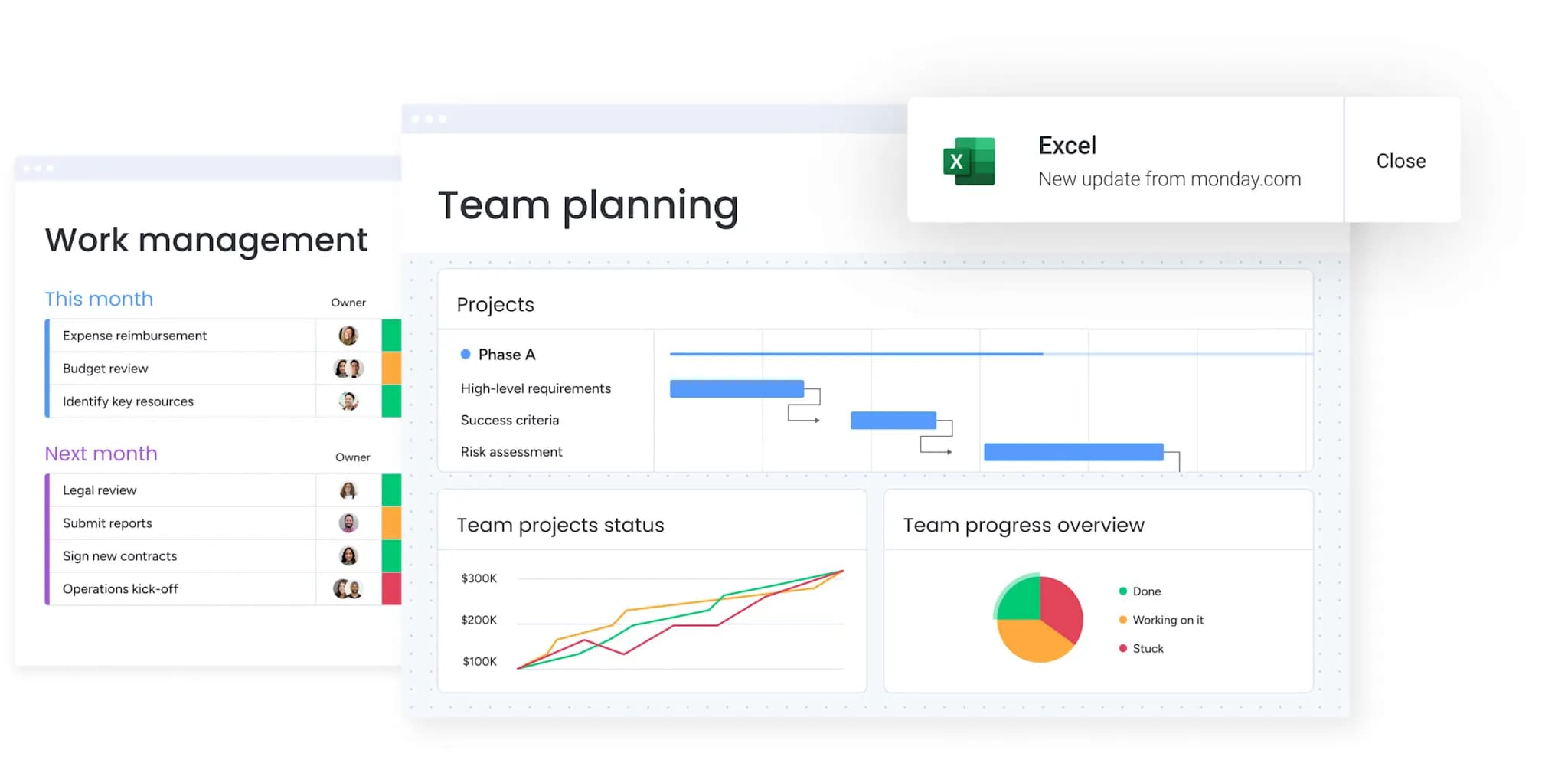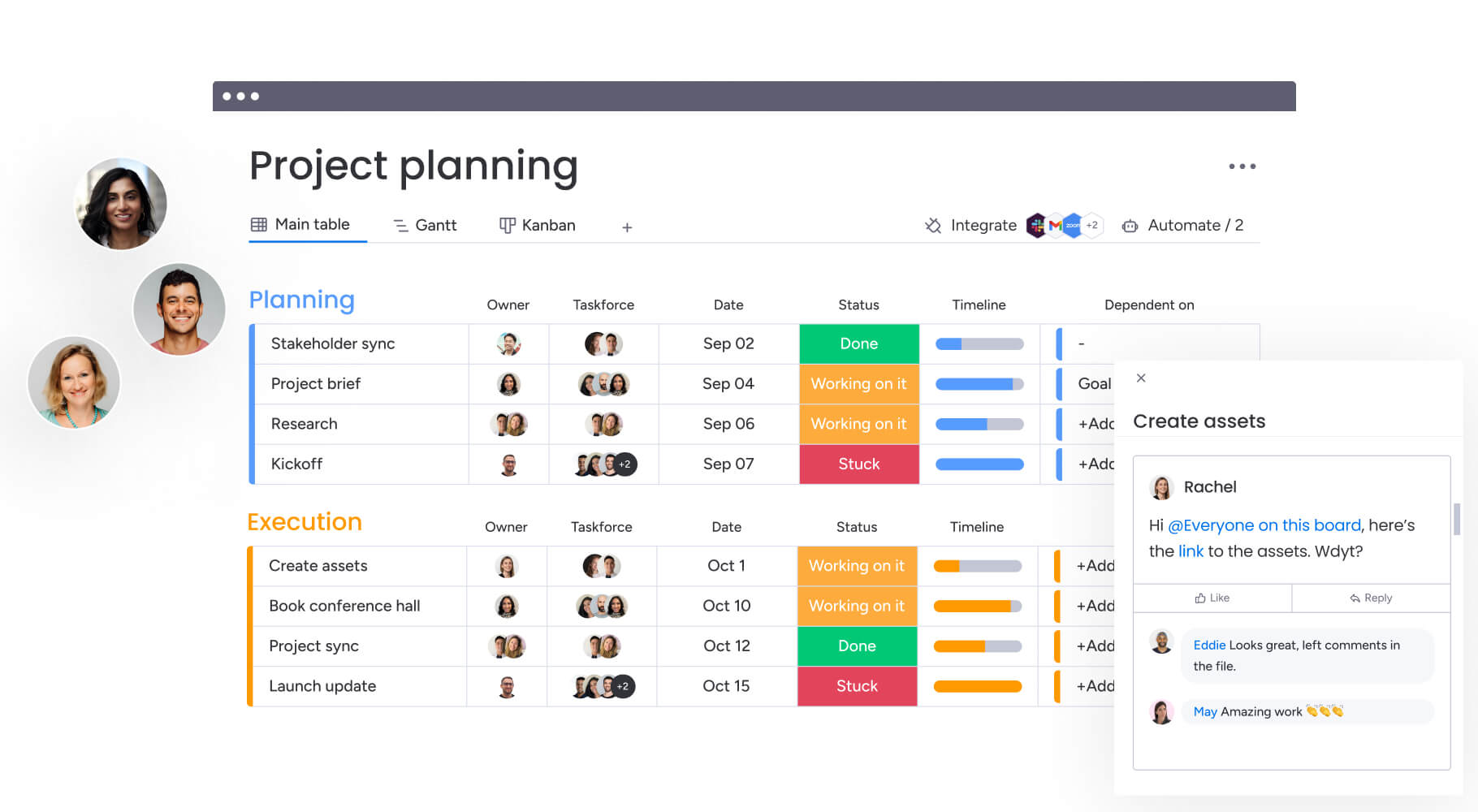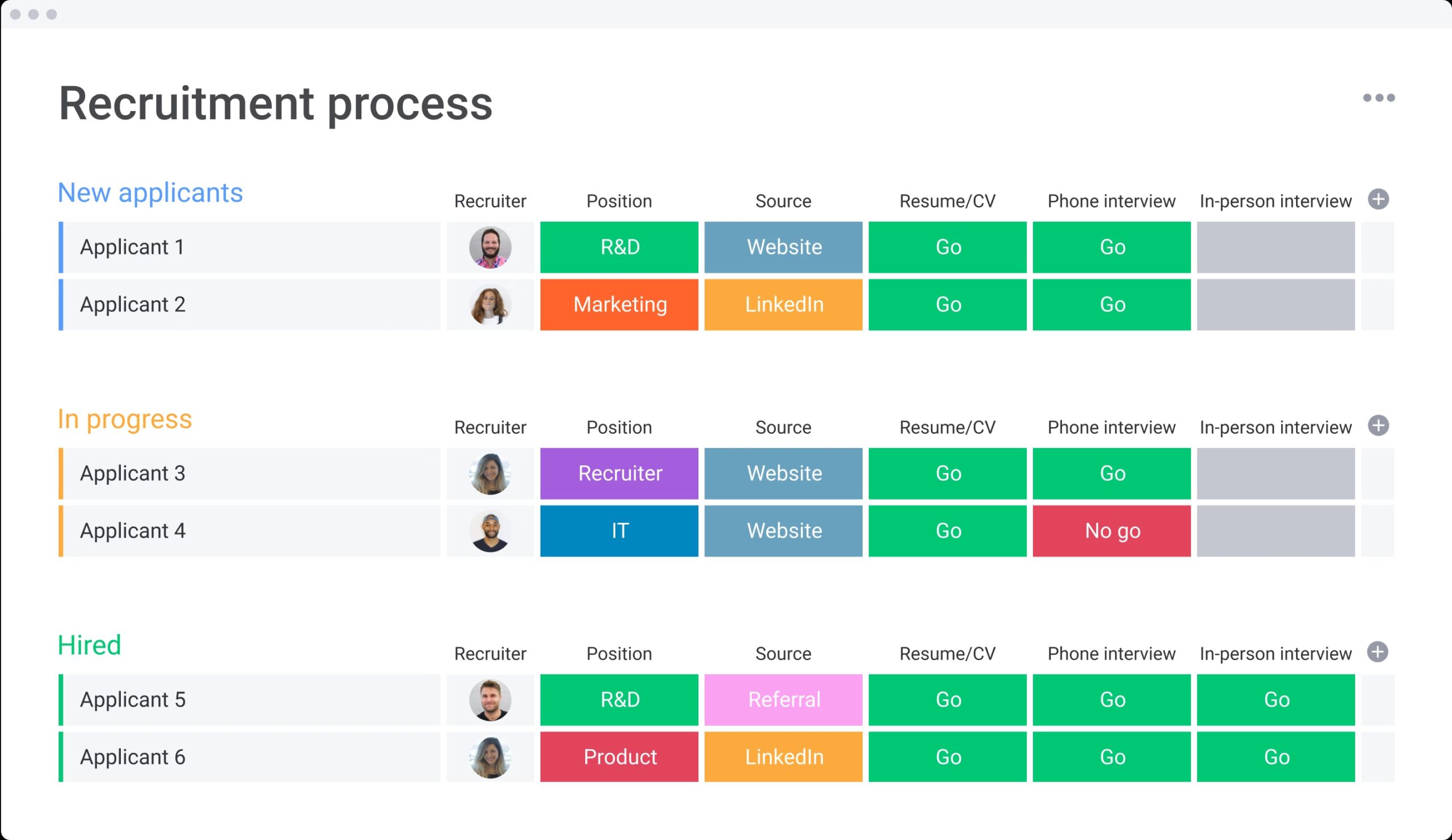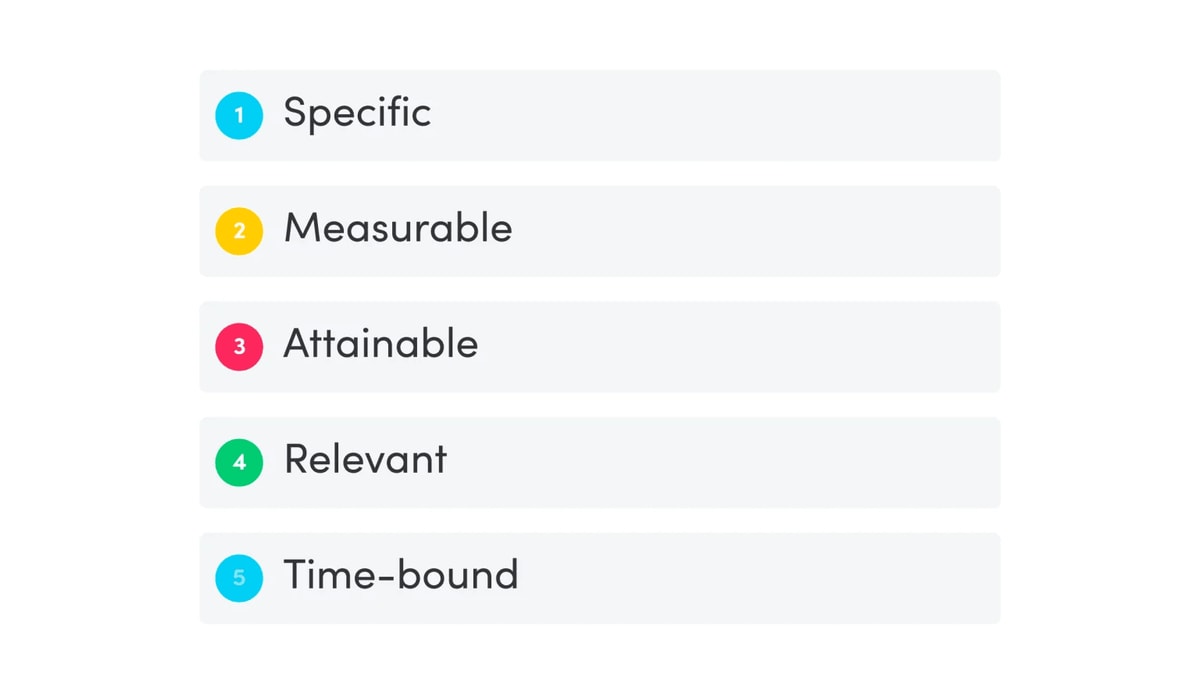Many projects finish on time and within budget yet still fall short of expectations. The reason is often simple: success was measured by delivery, not by impact. Benefits management changes that perspective by ensuring every initiative creates tangible, measurable value for the organization.
A well-designed benefits management plan connects project activities to business outcomes, clarifying why each task matters and how success will be evaluated. It turns abstract goals into concrete results by defining ownership, tracking performance, and maintaining visibility from kickoff through completion.
In this comprehensive 2025 guide, learn how to build a benefits management plan that drives alignment, accountability, and sustained value across your portfolio — ensuring every project delivers real business impact, not just finished deliverables.
Key Takeaways
- Focus on value: benefits management connects projects to measurable business outcomes, ensuring efforts drive real organizational impact.
- Plan with precision: define benefits clearly, assign accountable owners, and establish success metrics that prevent activity without value.
- Track continuously: monitor early indicators and final results to spot issues quickly and adjust before they affect delivery.
- Make insights visible: monday work management provides customizable dashboards and automated workflows that surface progress for all stakeholders.
- Assign ownership: designate benefits owners with authority beyond the project team to maintain accountability and sustain results after delivery.
What is benefits management?
Benefits management is the process of identifying, planning, measuring, and tracking benefits from the start of a program or project investment until realization of the last projected benefit. It ensures that projects deliver actual business value, not just outputs — a critical function when research shows only 31% of projects are considered successful.
A benefits management plan outlines how project deliverables translate into measurable outcomes. It establishes the connection between project activities and the strategic objectives they support, ensuring every effort contributes to tangible business impact.
Beyond documentation, the plan acts as a roadmap for accountability. It defines who owns each benefit, how results will be measured, and when success should be realized, creating alignment between project execution and long-term organizational performance.
Benefits management vs project management
Project management ensures work gets delivered on time, within scope, and on budget. Benefits management goes a step further — it measures whether that work actually creates the intended value for the business.
While both disciplines are closely connected, they serve distinct purposes. Understanding how they differ helps organizations move from simply completing projects to achieving meaningful outcomes. The table below highlights the key distinctions between the two approaches:
| Benefits management | Project management |
|---|---|
| Tracks business value and outcomes | Tracks deliverables and milestones |
| Continues after project ends | Ends at project completion |
| Measures ROI and business impact | Measures schedule and budget performance |
| Business stakeholders own the process | Project team owns the process |
.
Types of benefits in project management
Project benefits generally fall into three main categories, each representing a different kind of value and requiring its own approach to measurement and realization:
- Financial benefits: direct monetary gains such as increased revenue, cost savings, or improved profit margins.
- Operational benefits: efficiency improvements like faster cycle times, reduced errors, or smoother workflows.
- Strategic benefits: long-term advantages that strengthen the organization’s position, including market growth, innovation capacity, or competitive differentiation.
Recognizing these categories helps teams capture the full spectrum of value a project can deliver — from immediate financial returns to lasting strategic impact.

Why your team needs benefits management
Without benefits management, organizations struggle to prove project value or maintain stakeholder support. Teams deliver outputs that technically work but fail to move the needle on business metrics.
Benefits management changes this dynamic by connecting every project activity to specific business outcomes.
Align projects with strategic goals
Benefits management creates a direct line between daily project work and organizational objectives. When teams understand how their work drives business results, they make smarter decisions about priorities and trade-offs — a crucial advantage, as employees who understand how success is measured are likely to feel more motivated.
This alignment also helps secure ongoing support from leadership. Executives see exactly how projects contribute to strategic goals, making funding decisions easier to justify.
Demonstrate ROI and value
Effective benefits tracking turns project outcomes into measurable proof of impact. Instead of broad claims about improvement, teams can present data that clearly shows how their work drives meaningful results.
Using an integrated work management platform such as monday work management, teams can visualize benefit realization in real time through customizable dashboards. These views make progress transparent, helping stakeholders see exactly how projects contribute to organizational goals and overall ROI.
Improve stakeholder buy-in
Stakeholders support projects when they understand what’s in it for them. Benefits management makes value personal and specific for each stakeholder group.
This buy-in extends beyond initial approval. When stakeholders see benefits materializing, they stay engaged and help drive adoption.
Key components of a benefits management plan
An effective benefits management plan includes several essential elements that work together to ensure value realization:
- Benefits identification and definition: specific, measurable descriptions of expected value.
- Benefits owner assignment: business stakeholders accountable for realizing each benefit.
- Measurement criteria and KPIs: baseline metrics and success indicators.
- Timeline for benefits realization: when each benefit should materialize.
Let’s explore each component in detail.
Benefits identification and definition
Start by identifying all potential benefits your project could deliver. Make them specific and measurable — for example, “reduce invoice processing time from 4 hours to 2 hours” is more effective than “improve efficiency.”
Involve stakeholders in this process. They understand the business context and can identify benefits you might miss.
Benefits owner assignment
Each benefit needs an owner — someone from the business side with authority to drive realization, a critical step for closing the perception gap between senior leaders (92%) and individual contributors (76%) on whether their organization fosters shared ownership. This person takes responsibility for making the benefit happen after the project team moves on.
Benefits owners aren’t project team members, they’re business stakeholders who will live with the results and have the power to make necessary changes.
Measurement criteria and KPIs
Establish how you’ll measure each benefit before the project starts. Define baseline measurements, success criteria, and data collection methods.
Balance precision with practicality. Some benefits need sophisticated tracking, while others work fine with simple metrics or periodic surveys.
Timeline for benefits realization
Map when benefits should emerge. Some appear during the project, others months or years later.
This timeline sets realistic expectations and helps plan measurement activities. It also identifies early wins that can build momentum for longer-term benefits.

5 steps to create your benefits management plan
Creating a benefits management plan requires systematic thinking and stakeholder collaboration. These steps provide a practical framework for developing plans that drive real value.
Step 1: identify and categorize benefits
Run structured workshops with stakeholders to explore potential benefits. Ask what success looks like from their perspective and how they’d measure it.
Categorize benefits as financial, operational, or strategic. This helps with measurement planning and ensures you capture the full range of potential value.
Document each benefit with enough detail for measurement. Include the expected outcome, measurement approach, and business impact.
Step 2: map benefits dependencies
Mapping benefit dependencies clarifies how different outcomes connect and influence one another. Some benefits act as enablers, while others rely on several conditions being met before they can be achieved.
Understanding these connections strengthens risk management by revealing where a single issue could affect multiple results.
- Visualize relationships: create diagrams or dependency maps that show how benefits interact.
- Identify critical links: note which benefits rely on others to succeed.
- Assess potential impact: plan mitigation strategies for high-risk dependencies.
A sophisticated work management platform such as monday work management makes this process simpler, allowing teams to link related benefits, visualize dependencies, and see how adjustments in one area affect others across the project
Step 3: assign benefits owners
Select owners who have real influence over outcomes. They need authority to make changes and accountability for results.
Work with owners to ensure they understand their role. Provide support through training, resources, and clear expectations about their responsibilities.
Step 4: define measurement methods
Establish practical ways to measure each benefit. Consider data availability, collection effort, and measurement frequency.
Mix quantitative and qualitative approaches. Numbers tell part of the story, but stakeholder feedback and observations provide crucial context.
Step 5: create your benefits tracking system
Establish a clear framework to monitor progress and measure benefit realization over time. Consistent tracking keeps performance visible and actionable.
- Define success metrics: outline how each benefit will be measured.
- Set review cadence: decide how often progress will be checked.
- Automate tracking: reduce manual updates with connected data.
A unified work management solution such as monday work management simplifies this process through automated workflows and live dashboards, keeping benefit performance transparent across the organization.
Mapping benefits to project outputs
To deliver real business value, teams need a clear line of sight between what they produce and the outcomes those deliverables create. Mapping benefits to project outputs provides that visibility, translating activity into impact.
This process clarifies how specific outputs contribute to broader organizational goals, exposes gaps where value may be lost, and helps teams prioritize the work that matters most. The following steps outline how to visualize these relationships — from identifying dependencies to connecting outputs and outcomes in a clear, logical chain.
Creating a benefits dependency network
A dependency network shows relationships between benefits and their prerequisites. Start with your end benefits and work backward to identify what must happen first.
This network reveals critical dependencies and potential failure points. Use it to focus attention on foundational benefits that enable others.
Linking outputs to outcomes
Make explicit connections between project deliverables and business benefits. A new system (output) enables faster processing (outcome), which reduces costs (benefit).
This linking helps teams understand why each deliverable matters. It also identifies gaps where outputs might not lead to expected outcomes.
Visualizing the benefits chain
Create detailed visuals showing the complete path from activities to benefits. This chain helps stakeholders understand how their contributions create value.
Share these visuals widely to build understanding and commitment. When people see how their work connects to business outcomes, engagement increases.

How to track and measure project benefits
Tracking benefits is what turns planning into proof. Measuring progress over time shows whether expected outcomes are being achieved — and where adjustments are needed.
A structured approach combines real-time dashboards, leading indicators, and clear reporting to keep benefits visible and actionable at every stage. The sections below outline how to build a complete measurement framework that keeps teams informed and leadership confident in project value.
Setting up benefits dashboards
Create centralized dashboards showing real-time progress across all benefits. Include key metrics, trend indicators, and alerts for issues requiring attention.
Design different views for different audiences:
- Executive view: high-level summaries and strategic metrics.
- Operational view: detailed progress and performance data.
- Stakeholder view: benefits relevant to specific groups.
Monitoring leading indicators
Leading indicators signal whether benefits are on track before final results appear.
Examples include:
- User adoption rates for new systems.
- Process compliance levels.
- Early performance improvements.
- Stakeholder satisfaction scores.
Remember to set up automated monitoring for these indicators: early warnings enable faster response and higher success rates.
Reporting on benefits realization
Create regular reports tailored to different audiences. Executives need strategic summaries while operational teams need detailed performance data.
Use storytelling to make reports engaging. Combine metrics with specific examples of benefits being realized to create compelling narratives about project value.
Common benefits management challenges and solutions
Even the strongest benefits management plans face real-world hurdles — from unclear goals to inconsistent stakeholder involvement. Recognizing these challenges early allows teams to respond before they derail value realization.
The following common issues and their solutions highlight how to keep benefits measurable, ownership clear, and outcomes aligned with organizational objectives.
Challenge: vague benefit definitions
Vague benefit statements make tracking impossible and create disagreements about success.
Solution: use the SMART framework to make benefits Specific, Measurable, Achievable, Relevant, and Time-bound. Test each benefit statement by asking “How would we know if this was achieved?”
Challenge: lack of stakeholder engagement
When stakeholders don’t participate actively, benefit realization often fails after project completion. In fact, when transformations fail to engage line managers and frontline employees, only 3% report success.
Solution: involve stakeholders from the start and explicitly communicate their role as benefits owners. Provide training and ongoing support to help them succeed.
Challenge: difficulty measuring intangible benefits
Benefits like improved morale or enhanced reputation resist traditional measurement.
Solution: use proxy metrics and qualitative assessments:
- Employee surveys: track satisfaction and engagement scores.
- Customer feedback: monitor sentiment and loyalty metrics.
- Behavioral indicators: observe changes in collaboration or innovation.
Challenge: Benefits not materializing as expected
Sometimes expected benefits don’t emerge despite successful project delivery.
Solution: conduct regular reviews to understand variances. Be prepared to adjust benefit definitions, measurement approaches, or realization strategies based on new information.

Manage and measure benefits effectively with monday work management
Sustaining benefit realization across multiple projects requires structure, automation, and clear visibility. A connected platform brings these elements together, turning benefits planning into an ongoing, data-driven process.
With monday work management, teams can track benefits, automate updates, integrate key data sources, and visualize progress through real-time dashboards — all within one environment designed for alignment and transparency.
Create dedicated tracking boards with custom fields for:
- Benefit type and category: organize by financial, operational, or strategic value.
- Owner and stakeholders: assign accountability for outcomes.
- Measurement criteria: define how success is measured.
- Current status and progress: track realization in real time.
- Dependencies and risks: surface potential challenges early.
This foundation supports further capabilities like:
Advanced automations for streamlined benefits tracking
Set up automated processes that reduce manual work and ensure consistent benefits monitoring. Automation recipes can help you maintain focus on value delivery rather than administrative tasks.
- Trigger automatic status updates when benefit metrics change.
- Schedule recurring measurement check-ins with stakeholders.
- Send alerts when benefits fall behind expected realization timelines.
- Automate progress reports to keep leadership informed.
200+ integrations for comprehensive benefits data
Connect your benefits management system with the tools your teams already use. Pull real-time data from multiple sources to create a complete picture of benefit realization progress.
- Sync financial data from accounting systems for ROI tracking.
- Import customer feedback from CRM platforms to measure experience benefits.
- Connect with analytics tools for deeper insights into operational improvements.
- Integrate with communication tools to keep benefits owners engaged.
Powerful AI features for benefits optimization
Leverage AI capabilities to analyze patterns across benefits and identify optimization opportunities. Our intelligent platform helps you make data-driven decisions about benefit realization strategies.
- Receive AI-powered recommendations for improving underperforming benefits.
- Automatically identify correlations between project activities and outcomes.
- Generate predictive forecasts for long-term benefit trajectories.
- Use natural language processing to extract insights from stakeholder feedback.
Benefits realization dashboards for stakeholder alignment
Create visual representations of your benefits realization journey that keep everyone aligned and focused on value delivery. Custom dashboards provide the right information to the right people at the right time.
- Design executive views highlighting strategic benefit progress.
- Build operational dashboards showing detailed measurement data.
- Create stakeholder-specific views that emphasize relevant benefits.
- Set up real-time visualization of the benefits dependency network.
The platform’s AI capabilities analyze patterns across benefits to identify optimization opportunities. Use these insights to improve success rates and accelerate value realization.
Frequently asked questions
What happens if expected benefits from a project aren't realized?
When expected benefits don't materialize, teams should analyze root causes through structured reviews. Common reasons include changed business conditions, incomplete adoption, or flawed benefit logic. Based on findings, adjust your approach, provide additional support for adoption, or revise benefit expectations to reflect new realities.
How long should benefits tracking continue after project completion?
Benefits tracking should continue until all expected benefits fully materialize or the organization decides to stop pursuing them. This timeline varies widely — operational benefits might emerge within months while strategic benefits could take years. Establish realistic timelines during planning and adjust based on actual progress.
Can benefits management work effectively for small projects?
Benefits management scales to any project size by adjusting formality and documentation levels. Small projects might use a simple one-page benefits summary with quarterly check-ins, while large initiatives need comprehensive plans and continuous monitoring. The key is matching effort to potential value.
Who should own benefits realization in an organization?
Benefits owners should be business stakeholders with direct authority over the processes or areas where benefits will materialize. They need decision-making power, budget control, and team influence to drive necessary changes. Project managers facilitate the process but don't own business outcomes.
How do you measure intangible benefits like improved morale or culture change?
Intangible benefits require creative measurement approaches combining multiple data sources. Use employee engagement surveys for baseline and ongoing measurement, track behavioral indicators like collaboration frequency or innovation metrics, and gather qualitative feedback through interviews or focus groups. Consistency in measurement method matters more than precision.
What's the difference between benefits management and change management?
Benefits management focuses on identifying, planning, and realizing value from projects. Change management helps people adopt new ways of working. While distinct disciplines, they work together — change management enables the adoption necessary for benefit realization, while benefits management provides the "why" that motivates change.
